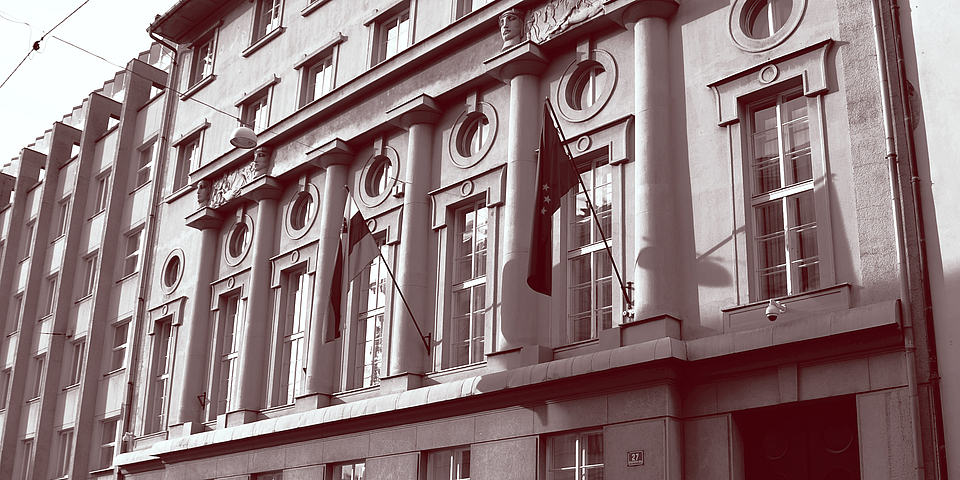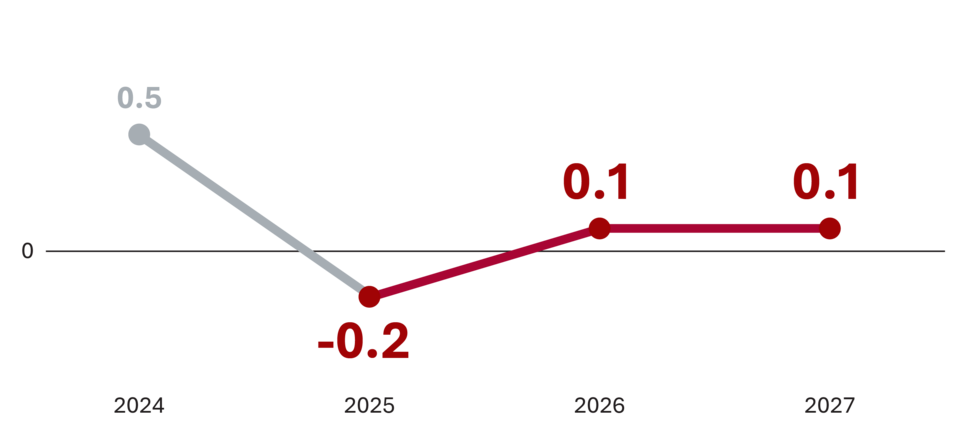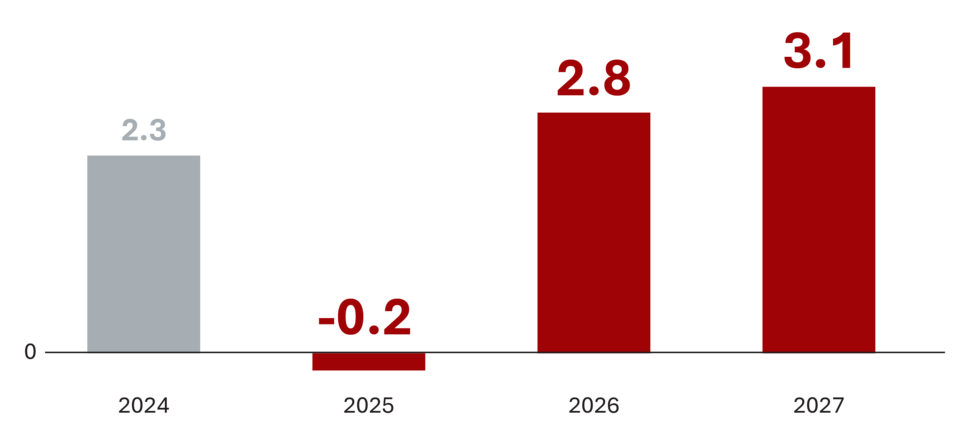Charts of the week from 15 to 22 December 2025: Slovenian industrial producer prices, electricity consumption by consumption group, number of persons in employment and other charts
Year-on-year growth of Slovenian industrial producer prices eased slightly in November compared with October, to 1.1%. With the number of working days unchanged year-on-year, industrial electricity consumption in November declined by 2.4%, while household consumption increased by 2.2%. Year-on-year nominal…
Slovenian Economic Mirror 8/2025: Lowest inflation since June, strong growth in construction activity, continued decline in goods exports
In October, goods exports declined further and remain lower year-on-year. In manufacturing, output in high- and medium-low-technology industries has increased in recent months; however, total output remains lower year-on-year. Expectations regarding…
Charts of the week from 8 to 12 December 2025: production volume in manufacturing
Manufacturing output remained unchanged month-on-month in October, while it again increased in high-technology and medium-low-technology industries. In the first ten months, manufacturing output was 1.1% lower year-on-year. In October, expectations regarding future production in…
Charts of the week from 1 to 5 December 2025: unemployment, exports and imports of goods
The number of unemployed persons declined slightly in November, yet on a year-on-year basis it remained somewhat higher owing to increases recorded in previous months. The number of long-term unemployed and older unemployed persons continued to be lower than a year earlier, while the number of…
National productivity board
IMAD analyses productivity and competitiveness as the national productivity board
GDP and prices
This year, GDP growth is expected to slow to 0.8% (down from 1.7% last year), well below the levels projected in the spring (2.1%). The deceleration is primarily attributable to weaker export activity, particularly in the first half of the year, reflecting the economy’s relatively strong exposure to challenges in European industry. Economic growth in 2025 will be driven mainly by domestic demand, especially household consumption, supported by robust employment and accelerating wage growth. Inflation in 2025 (2.9% year-on-year at end-2025) will be somewhat higher than last year, mainly due to higher food prices, and above the level projected in the spring, before gradually easing over the next two years (towards 2.3%).
Labour market
Employment is projected to decline on average in 2025, and then largely stagnate over the following two years, while unemployment is expected to remain low throughout the entire period. Nominal wage growth in 2025 will exceed last year’s growth, driven mainly by increases in the public sector (phasing-in of the wage reform) before easing somewhat thereafter. Real wage growth will exceed the rates observed a decade ago.
International trade
Total exports this year are expected to remain broadly unchanged from last year, and significantly below the levels projected in the spring. Goods exports are projected to decline, mainly due to lower exports of intermediate goods, while services exports are expected to increase. With a gradual improvement in foreign demand, a recovery in the export-oriented sector of the economy is anticipated over the next two years. The current account surplus is gradually declining.
IMAD

The Institute of Macroeconomic Analysis and Development of the Republic of Slovenia is an independent government office.
The Institute performs the following tasks:
- it monitors and analyses current trends and development in its economic, social and environmental dimensions;
- it monitors and analyses the achieving of the development objectives of the country;
- it prepares macroeconomic forecasts and other expert groundwork that serve as the basis for budgetary planning and formulating economic policy measures;
- it analyses productivity and competitiveness as the national productivity board;
- it carries out research work.



